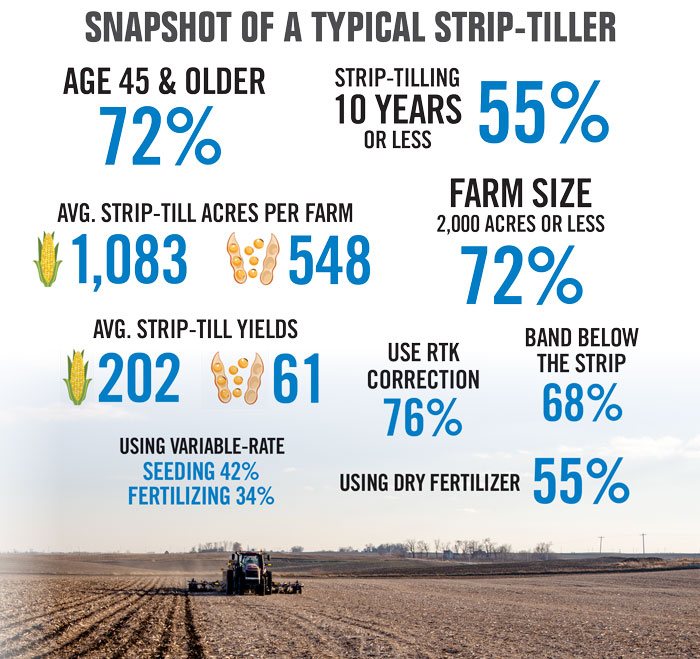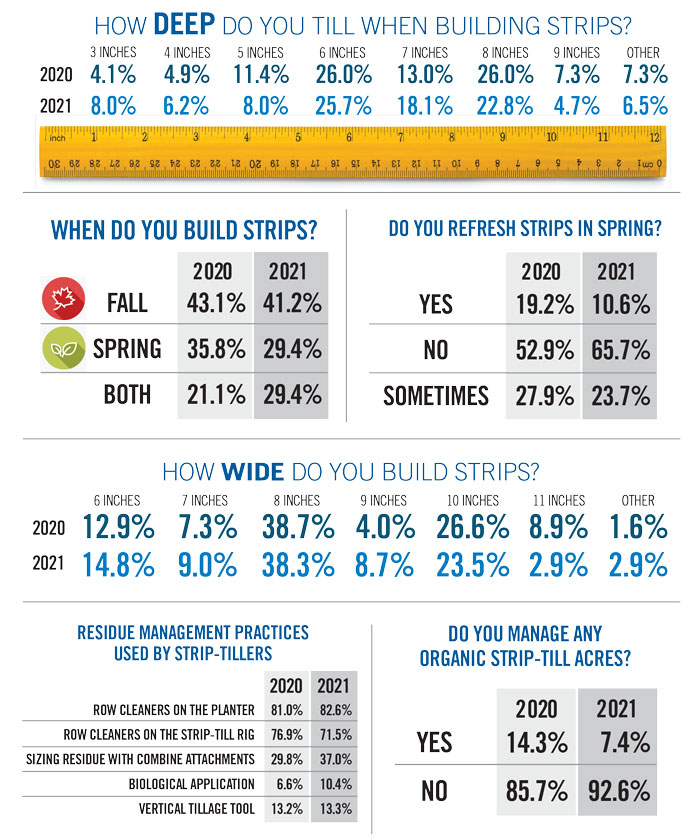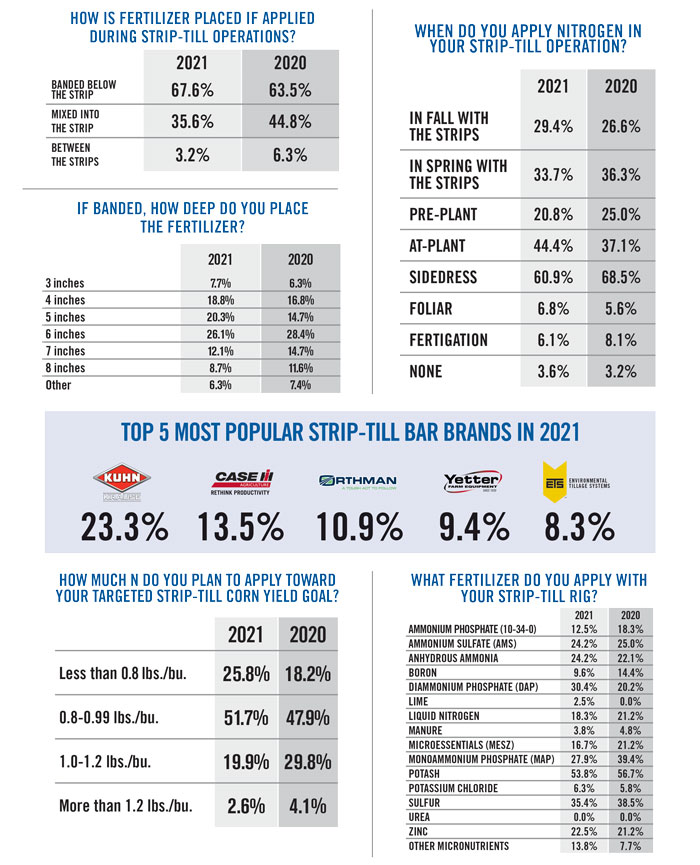Although the 2021 planting season started well, wet areas in the south, hail and frost in the Midwest, and high heat and drought in the west and Great Plains proved challenging for farmers last year.
Despite the regional weather events, the average strip-tiller’s yields outperformed the U.S. average and their no-till counterparts, according to data from the 2022 Strip-Till Benchmark Survey.
Most of this year’s respondents farm in the U.S. About 63% farm in the Corn Belt, followed by about 21% in the Plains/West.
More than half of the respondents have been strip-tilling for 10 years or less (55%). They strip-till an average of 1,083 acres of corn and 548 acres of soybeans. Both numbers represent a significant increase in acres compared to 2020 — 58% more corn and 79% more soybeans — but this increase can be partially attributed to more farmers running large-acre operations (more than 5,000 acres) taking the survey this year. Farmers with 5,000 or more acres made up 9.6% of respondents, compared to 4.7% in 2021. About 44% of strip-tillers who took the 2022 survey are farming 1,000 acres or less. Another 28% farm 1,001-2,000 acres.
While the 2021 benchmark survey suggested younger farmers are taking up strip-till, this year’s respondents tended to be older than last year. About 72% of respondents were 45 and older, compared to 64% in 2021.
Yields
The average corn yield reported by benchmark survey respondents was 202 bushels per acre on strip-till acres, compared to 195 in 2020. The average soybean yield per acre was 61 bushels, down from 66 bushes in 2020.
The surveyed strip-tillers had average corn yields that were 25 bushels per acre better than the 2021 corn averages reported by the USDA in January. The overall corn yield in the U.S. was estimated at 177 bushels per acre in 2021 — a record high. Average strip-till soybean yields were 9.6 bushels higher than the U.S. average of 51.4 bushels per acre in 2021, the second highest national average on record.
Strip-tilled corn and soybeans also yielded higher than their no-tilled counterparts in 2021. The 2021 No-Till Operational Benchmark Study reported average yields of 185 bushels for corn and 56 bushels for soybeans.
Equipment
Strip-till toolbars with 12 rows were most popular among this group of survey respondents, with about 43% running a 12-row bar. About 30% run 16-row bars, and another 15% run 8-row toolbars. The most popular brand of toolbar was Kuhn Krause, followed by Case IH/DMI and Orthman. Half of respondents use shanks on their strip-till bar, making shanks the most popular row unit setup.
Most strip-tillers who responded to this survey make at least some strips in the fall. About 41% do fall strip-till, 29% do spring strip-till and 29% do both. More farmers opted to strip-till in both the spring and fall — rather than just the spring — compared to 2020. Strip freshening reached an all-time low in 2021. Nearly 66% of strip-tillers who made strips in the fall did not refresh them in the spring. Another 24% sometimes refresh.
The most common strip depth is 6 inches, followed by 8 inches and 7 inches. Depths ranged from 3-9 inches. Eight inches is the most common width for strips, followed by 10 inches and 6 inches.
Nutrients
2021 marked an increase in the number of farmers who band fertilizer while strip-tilling. About 68% banded fertilizer below the strip in 2021, compared to 64% in 2020 and 60% in 2019. The most common depth for banding fertilizer is 6 inches, followed by 5 and 4 inches.
The most common time to apply nitrogen (N) in 2021 was sidedress, followed by at-plant, in fall with the strips and in spring with the strips. Applying phosphorus (P) and potassium (K) in fall strips was the most common application time in 2021, followed by in spring with the strips and at-plant. About two-thirds of strip-tillers do not use variable rate when applying fertilizer with the strip-till rig, but of that group, about 5% planned to try it when they made strips this year.










